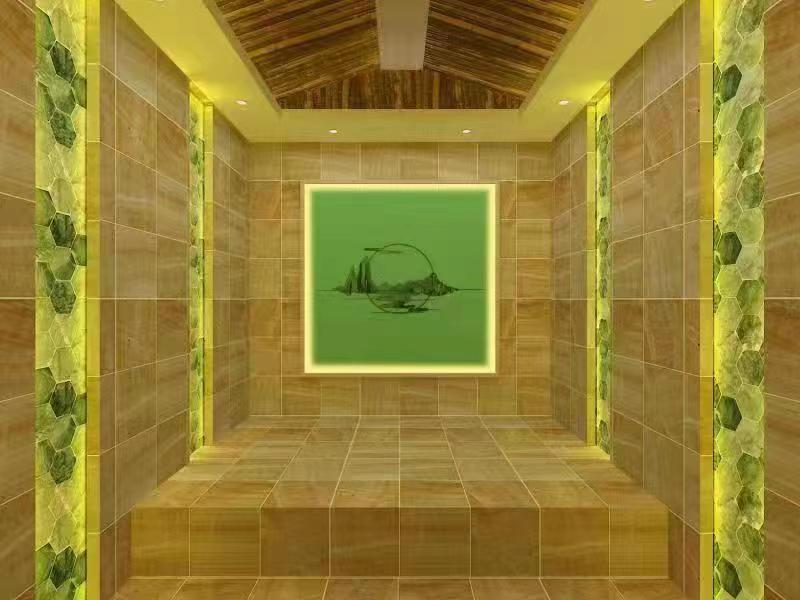
In a northern climate, choosing the right flooring material for a sweat room is crucial to ensure functionality, durability, and comfort. There are several factors that need to be taken into account.
One of the primary considerations is moisture resistance. Sweat rooms are characterized by high humidity levels due to the evaporation of sweat. Therefore, the flooring material must be able to withstand constant exposure to moisture without warping, rotting, or developing mold. Materials like ceramic tiles and porcelain tiles are excellent choices as they are impervious to water. They have a glazed surface that prevents moisture from seeping in, making them highly suitable for the damp environment of a sweat room. Vinyl flooring is another option that offers good moisture resistance. It is available in both sheet and tile forms and can mimic the look of other materials while providing a waterproof barrier.
In a northern setting, where temperatures can be quite cold, the flooring material's thermal conductivity plays an important role. A material with good thermal conductivity will help to retain heat within the sweat room, making it more energy-efficient and comfortable. Natural stone such as marble or granite has relatively high thermal conductivity and can absorb and radiate heat well. However, it is important to note that these materials can be cold to the touch initially and may require some additional heating measures to reach a comfortable temperature quickly. On the other hand, materials like cork have lower thermal conductivity and can provide a warmer surface underfoot. Cork is also a good insulator, which can help to maintain a more consistent temperature in the sweat room.
Safety is of utmost importance in a sweat room, and slip resistance is a key factor to consider. The floor surface can become slippery due to the combination of moisture and sweat. Flooring materials with a textured or rough surface provide better traction and reduce the risk of slips and falls. Anti-slip tiles are specifically designed with grooves or patterns on the surface to enhance grip even when wet. Rubber flooring is also a popular choice for its excellent slip resistance. It has a natural elasticity that provides a firm footing and is less likely to cause accidents. Additionally, some vinyl flooring products come with an anti-slip coating or embossed surface for added safety.
The sweat room is a high-traffic area that experiences regular use and exposure to various elements. The flooring material should be durable enough to withstand the wear and tear over time. Ceramic and porcelain tiles are known for their hardness and resistance to scratches, stains, and impacts. They can maintain their appearance and integrity even with heavy use. Solid hardwood flooring can also be a durable option if properly treated and maintained. However, it is more susceptible to moisture damage compared to tiles or some synthetic materials. Engineered wood flooring, which consists of a layered construction, offers better stability and resistance to moisture, making it a more suitable choice for a sweat room in some cases.
Ease of maintenance and cleaning is another important consideration. The flooring in a sweat room needs to be regularly cleaned to remove dirt, sweat, and any bacteria or mold that may accumulate. Materials that are easy to clean and maintain will save time and effort in the long run. Ceramic and porcelain tiles can be simply wiped clean with a damp cloth and mild detergent. Vinyl flooring is also relatively easy to clean and is resistant to most stains. Cork flooring requires a bit more care but can be maintained with regular sweeping and occasional mopping with a mild cleaner. It is important to avoid using harsh chemicals that could damage the flooring surface or affect its performance.
While functionality is crucial, the aesthetics of the flooring material also matter. The flooring should complement the overall design and atmosphere of the sweat room. There are a wide variety of options available in terms of colors, textures, and patterns. Natural stone like marble or granite can add a luxurious and elegant touch to the space. Ceramic and porcelain tiles come in a multitude of designs, including imitations of natural materials, allowing for a customized look. Wood flooring provides a warm and natural feel, while vinyl flooring can mimic the appearance of wood, stone, or other materials at a more affordable price. Consider the overall style and theme of the sweat room when choosing the flooring to ensure a cohesive and pleasing visual effect.

